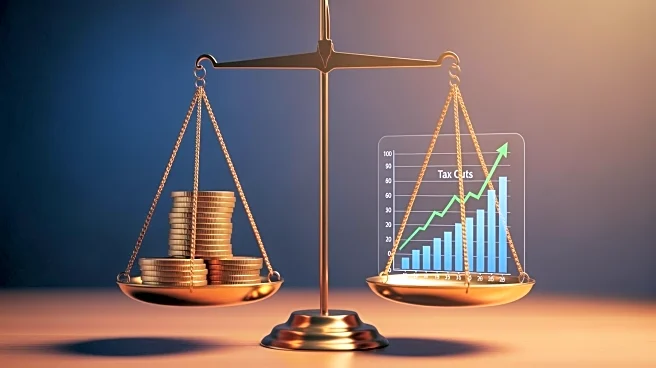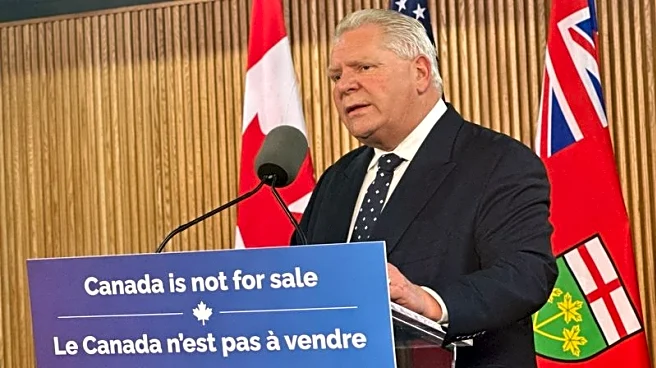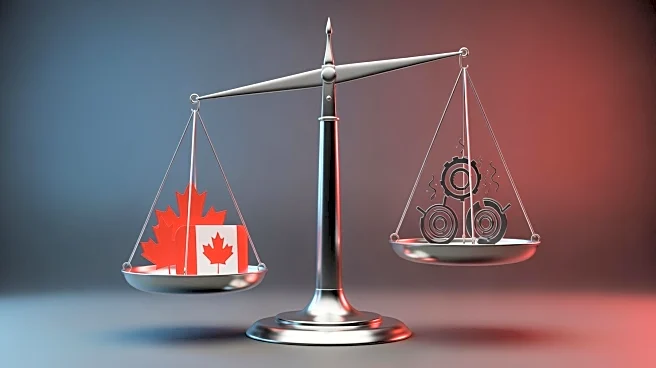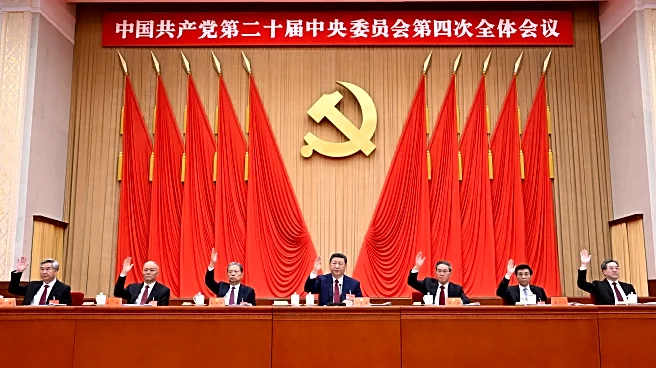What's Happening?
The article discusses the impact of tax cuts on federal revenues, highlighting historical examples where lowering or maintaining reasonable tax rates led to increased revenues. The analysis references the Laffer Curve, a concept suggesting that there
is an optimal tax rate that maximizes revenue without discouraging economic participation. The article cites past tax cuts under Presidents Calvin Coolidge, John F. Kennedy, Ronald Reagan, George W. Bush, and Donald Trump as instances where tax reductions resulted in enhanced revenues. The argument is that lowering taxes on top earners incentivizes wealth creation and economic participation, contrary to the belief that higher taxes on the wealthy would increase revenue.
Why It's Important?
This analysis is significant as it challenges the conventional wisdom that higher taxes on the wealthy automatically lead to increased government revenue. The discussion is particularly relevant in the context of ongoing debates about tax policy and economic growth in the U.S. The article suggests that finding the 'sweet spot' in tax rates can stimulate economic activity and increase overall tax revenue. This perspective could influence policymakers and stakeholders in shaping future tax legislation, potentially impacting economic growth, income distribution, and government funding capabilities.
What's Next?
The article implies that future tax policy should consider the balance between tax rates and economic incentives. Policymakers may need to evaluate the effectiveness of current tax structures and consider adjustments that could foster economic growth while ensuring sufficient revenue. The ongoing debate about the fairness and efficiency of tax systems is likely to continue, with potential implications for future legislative actions and economic strategies.
Beyond the Headlines
The discussion touches on broader economic principles, such as the role of entrepreneurial activity in driving economic growth and the potential consequences of tax policy on wealth distribution. The analysis also raises questions about the accuracy of economic projections and the methodologies used by institutions like the Congressional Budget Office. These considerations highlight the complexity of tax policy and its far-reaching implications for economic stability and social equity.















